The deadweight lamb trade has come under downward pressure in recent weeks with quotes for lambs now in the region of 600-610c/kg (plus Quality Assurance – QA – bonus).
The reported lamb price for the week ending 9 October 2022 was 609c/kg, back marginally on 613c/kg from the corresponding week last year.
While deadweight lamb prices are similar to October 2021 levels, current prices should be taken in the context of higher costs of production at farm level.
Costs
Rising costs of feed and fertiliser combined with some challenging grass-growing conditions have created a more difficult environment for finishing lamb this year, with reports indicating poorer lamb killout rates and a reduction in the level of fat cover on lambs being presented for slaughter.
Production difficulties have also had a negative impact on average carcase weights, which are back in the region of 0.5kg from 2021 levels.
Throughput
Lamb throughput in the Department of Agriculture, Food and the Marine-approved plants has totalled 914,743 head since the start of June 2022, back in the region of 100,000 head from the same period in 2021.
These additional lambs remain on Irish farms and while some are expected to come out for slaughter during quarter four this year, the expectation would be for a further increase in the carryover of 2022-born lambs into 2023 for finishing as hoggets. There was also a 2.1% increase in the Irish ewe flock in the December 2021 census, which will further increase this figure.
Exports
Irish sheepmeat exports for the first eight months of 2022 were valued at €310m, a 20% increase from levels a year earlier.
This was driven by higher average deadweight prices for the year to date combined with the sharp increase in sheepmeat production in the first six months of the year.
Europe has remained the most important market outlet for Irish sheepmeat exports, absorbing 74% of Ireland’s exports in value terms, with the UK accounting for a further 17% so far this year.
Between January and August 2022, Irish exports to the EU were €230m, up 20% on last year and up 18% on volume to 35,199t. Exports to the UK were up 20% in value to €51m and 12% in volume to 9,798t.
Demand for lamb from customers in the domestic market and in key export markets has been hit in recent months by the growing impacts of inflation on consumer choices.
The tighter supplies of lambs for processing and lighter carcase weights have reduced product availability, however, which has helped to keep a floor under the trade.
Recent insights from key markets for Irish lamb in Europe have indicated a reduction in consideration of lamb at point of purchase by retail customers due to the high price point relative to other proteins.
Sheep promotions and markets
Bord Bia has continued to utilise its network of overseas offices, particularly those in the EU, to increase the awareness of and willingness to buy Irish lamb with a range of activities undertaken and planned before the end of the year.
Markets
Germany is a significant market for Irish sheepmeat, taking 7,685t between January and August, a 33% increase on same period last year.
So far this year, activities have included promotion of Irish lamb at trade fairs, cookery demonstrations with well-known chefs and also the strategic placement of media and trade advertisements, which was complemented by online and social media activity.
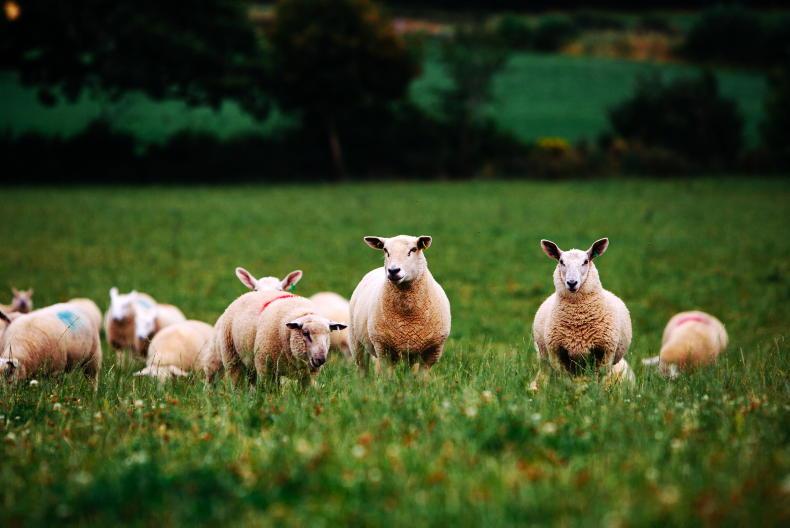
Organic sheep.
France remains Ireland’s main export market for lamb, while Belgium has been developing steadily over the past decade. Highlight of promotional activity is a St Patrick’s Day event in Rungis, plus ongoing media campaigns. Italy is primarily a food service market for Irish lamb and Bord Bia engages with butchers and has a range of buyer- and consumer-focused campaigns. Bord Bia is also actively engaged in Denmark, Sweden and Switzerland, which are smaller markets but have growth potential.
Finished cattle prices at Irish meat plants have fallen over recent weeks, with R3 steers averaging €4.68/kg (excluding VAT) for the week ending 9 October 2022. This compares with an R3 steer price of €4.18/kg during the corresponding week last year.
For the year to date, Irish R3 steer prices are running 19% ahead of 2021 levels, at €4.80/kg (excluding VAT). By comparison, in the UK, R3 steer prices have averaged €5.09/kg heretofore, while the average EU R3 young bull price was €4.90/kg for the first eight months of 2022. In sterling terms, steer prices in the UK have fallen by an average of 5p (6c) from July to October.
Just over 1.39m head of cattle have been processed to date in 2022, which represents an increase of approximately 106,000 head (8%) on the same period last year. This increase in supply has been driven by higher availability of all categories of animals.
Most notably, cow throughput has risen by 13% (40,172 head). A significant majority of these additional cows have been from the dairy herd, as opposed to cull suckler cows. Prime cattle categories (steers, heifers and young bulls) are each running approximately 6% above 2021 levels.
Supply forecasts to the year end, taking the latest trends into account from the Department of Agriculture, Food and the Marine’s Animal Identification and Movements System (AIMS), suggest that overall throughput for 2022 will have risen by 110,000 to 120,000 head on last year’s levels.
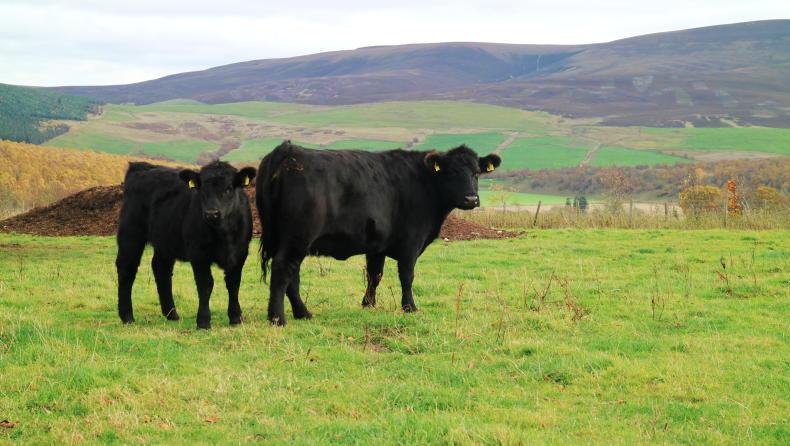
With the significant increase in winter finishing costs and tighter fodder supplies in many areas, it is likely that some beef producers will opt to market animals earlier than usual.
The impact of higher cattle slaughterings is being partially offset by lighter carcase weights.
On average, steer carcases have been 5kg lighter so far in 2022, at 349kg, while cow carcase weights have fallen by 9kg to an average of 303kg.
Market pressure
Over the past couple of months, demand for beef experienced some downward pressure across Ireland’s European export markets, as consumers began to adjust to increases in the cost of living, including other household expenses such as electricity and fuel.
After energy, food has been the second biggest driver of inflation and retailers have acted over recent months to increasingly focus on value in order to retain market share.
Latest forecasts from the European Beef Forecasting Group indicate a 1.04% reduction in beef consumption for 2022, with a 4% reduction in Germany and a 1% reduction, respectively, in France and Sweden.
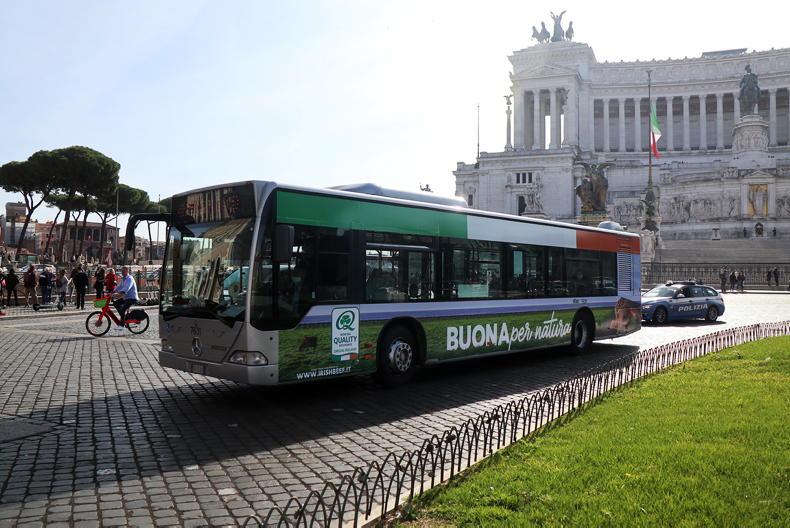
New ‘Buona Per Natura’ Irish beef advertisements on public transport in Rome.
These trends have become more evident in the second half of the year, as consumers have begun to feel the impact of rising costs and consequently curtailed their spend on higher priced proteins.
In Britain, Kantar figures for the 52 weeks to 4 September show a decline in retail beef volumes of -11%, although food service recovered by 26% (from the previous year which had seen partial closure of the food service market due to COVID-19 restrictions).
However, overall beef volume sales were estimated to have fallen by 7%.
The weaker demand for higher-value steak cuts has been partially offset by a strong forequarter beef trade, especially for manufacturing product.
This is reflected in the Kantar retail figures, which show a 16.5% reduction in steak sales in the year to September, while burger sales reduced by 1.1%.
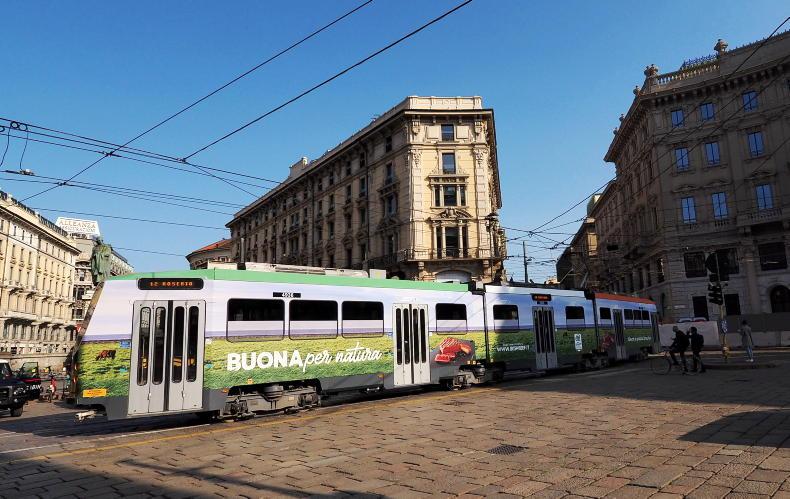
Bord Bia tram promotion in Rome.
Beef promotions and markets
An extensive programme of beef promotions is presently under way across priority markets including the UK, Italy and Germany, as well as growth markets such as Belgium, Sweden, central and eastern Europe and Greece.
These promotions focus on raising awareness and the growing preference for Irish beef based on superior taste and Ireland’s sustainable grass-fed production.
Resources
Bord Bia has allocated additional resources to amplify its autumn Irish beef campaigns, focusing on Ireland’s main export markets for premium steak cuts, including Germany, Italy, Switzerland and Belgium.
Examples include billboard advertising in Germany and Belgium close to supermarkets and in store and on pack promotion in Italy.
Working with nature to
promote Irish beef and lamb
Bord Bia’s €4.8m EU co-funded promotion of beef and lamb in Asia and the US commenced on 1 June. This three-year information and promotional campaign is being rolled out in China, Japan, South Korea and the US and focuses on the sustainable, grass-based credentials of Irish beef and sheepmeat.
The campaign will allow Bord Bia to exhibit at 12 trade shows, host 21 trade seminars, nine Chef Masters events and welcome 60 trade and media representatives to Ireland.
Social media
In addition to these physical activities, the campaign will undertake a suite of digital promotional activities such as website and social media, advertising and recipe videos.
The deadweight lamb trade has come under downward pressure in recent weeks with quotes for lambs now in the region of 600-610c/kg (plus Quality Assurance – QA – bonus).
The reported lamb price for the week ending 9 October 2022 was 609c/kg, back marginally on 613c/kg from the corresponding week last year.
While deadweight lamb prices are similar to October 2021 levels, current prices should be taken in the context of higher costs of production at farm level.
Costs
Rising costs of feed and fertiliser combined with some challenging grass-growing conditions have created a more difficult environment for finishing lamb this year, with reports indicating poorer lamb killout rates and a reduction in the level of fat cover on lambs being presented for slaughter.
Production difficulties have also had a negative impact on average carcase weights, which are back in the region of 0.5kg from 2021 levels.
Throughput
Lamb throughput in the Department of Agriculture, Food and the Marine-approved plants has totalled 914,743 head since the start of June 2022, back in the region of 100,000 head from the same period in 2021.
These additional lambs remain on Irish farms and while some are expected to come out for slaughter during quarter four this year, the expectation would be for a further increase in the carryover of 2022-born lambs into 2023 for finishing as hoggets. There was also a 2.1% increase in the Irish ewe flock in the December 2021 census, which will further increase this figure.
Exports
Irish sheepmeat exports for the first eight months of 2022 were valued at €310m, a 20% increase from levels a year earlier.
This was driven by higher average deadweight prices for the year to date combined with the sharp increase in sheepmeat production in the first six months of the year.
Europe has remained the most important market outlet for Irish sheepmeat exports, absorbing 74% of Ireland’s exports in value terms, with the UK accounting for a further 17% so far this year.
Between January and August 2022, Irish exports to the EU were €230m, up 20% on last year and up 18% on volume to 35,199t. Exports to the UK were up 20% in value to €51m and 12% in volume to 9,798t.
Demand for lamb from customers in the domestic market and in key export markets has been hit in recent months by the growing impacts of inflation on consumer choices.
The tighter supplies of lambs for processing and lighter carcase weights have reduced product availability, however, which has helped to keep a floor under the trade.
Recent insights from key markets for Irish lamb in Europe have indicated a reduction in consideration of lamb at point of purchase by retail customers due to the high price point relative to other proteins.
Sheep promotions and markets
Bord Bia has continued to utilise its network of overseas offices, particularly those in the EU, to increase the awareness of and willingness to buy Irish lamb with a range of activities undertaken and planned before the end of the year.
Markets
Germany is a significant market for Irish sheepmeat, taking 7,685t between January and August, a 33% increase on same period last year.
So far this year, activities have included promotion of Irish lamb at trade fairs, cookery demonstrations with well-known chefs and also the strategic placement of media and trade advertisements, which was complemented by online and social media activity.

Organic sheep.
France remains Ireland’s main export market for lamb, while Belgium has been developing steadily over the past decade. Highlight of promotional activity is a St Patrick’s Day event in Rungis, plus ongoing media campaigns. Italy is primarily a food service market for Irish lamb and Bord Bia engages with butchers and has a range of buyer- and consumer-focused campaigns. Bord Bia is also actively engaged in Denmark, Sweden and Switzerland, which are smaller markets but have growth potential.
Finished cattle prices at Irish meat plants have fallen over recent weeks, with R3 steers averaging €4.68/kg (excluding VAT) for the week ending 9 October 2022. This compares with an R3 steer price of €4.18/kg during the corresponding week last year.
For the year to date, Irish R3 steer prices are running 19% ahead of 2021 levels, at €4.80/kg (excluding VAT). By comparison, in the UK, R3 steer prices have averaged €5.09/kg heretofore, while the average EU R3 young bull price was €4.90/kg for the first eight months of 2022. In sterling terms, steer prices in the UK have fallen by an average of 5p (6c) from July to October.
Just over 1.39m head of cattle have been processed to date in 2022, which represents an increase of approximately 106,000 head (8%) on the same period last year. This increase in supply has been driven by higher availability of all categories of animals.
Most notably, cow throughput has risen by 13% (40,172 head). A significant majority of these additional cows have been from the dairy herd, as opposed to cull suckler cows. Prime cattle categories (steers, heifers and young bulls) are each running approximately 6% above 2021 levels.
Supply forecasts to the year end, taking the latest trends into account from the Department of Agriculture, Food and the Marine’s Animal Identification and Movements System (AIMS), suggest that overall throughput for 2022 will have risen by 110,000 to 120,000 head on last year’s levels.

With the significant increase in winter finishing costs and tighter fodder supplies in many areas, it is likely that some beef producers will opt to market animals earlier than usual.
The impact of higher cattle slaughterings is being partially offset by lighter carcase weights.
On average, steer carcases have been 5kg lighter so far in 2022, at 349kg, while cow carcase weights have fallen by 9kg to an average of 303kg.
Market pressure
Over the past couple of months, demand for beef experienced some downward pressure across Ireland’s European export markets, as consumers began to adjust to increases in the cost of living, including other household expenses such as electricity and fuel.
After energy, food has been the second biggest driver of inflation and retailers have acted over recent months to increasingly focus on value in order to retain market share.
Latest forecasts from the European Beef Forecasting Group indicate a 1.04% reduction in beef consumption for 2022, with a 4% reduction in Germany and a 1% reduction, respectively, in France and Sweden.

New ‘Buona Per Natura’ Irish beef advertisements on public transport in Rome.
These trends have become more evident in the second half of the year, as consumers have begun to feel the impact of rising costs and consequently curtailed their spend on higher priced proteins.
In Britain, Kantar figures for the 52 weeks to 4 September show a decline in retail beef volumes of -11%, although food service recovered by 26% (from the previous year which had seen partial closure of the food service market due to COVID-19 restrictions).
However, overall beef volume sales were estimated to have fallen by 7%.
The weaker demand for higher-value steak cuts has been partially offset by a strong forequarter beef trade, especially for manufacturing product.
This is reflected in the Kantar retail figures, which show a 16.5% reduction in steak sales in the year to September, while burger sales reduced by 1.1%.

Bord Bia tram promotion in Rome.
Beef promotions and markets
An extensive programme of beef promotions is presently under way across priority markets including the UK, Italy and Germany, as well as growth markets such as Belgium, Sweden, central and eastern Europe and Greece.
These promotions focus on raising awareness and the growing preference for Irish beef based on superior taste and Ireland’s sustainable grass-fed production.
Resources
Bord Bia has allocated additional resources to amplify its autumn Irish beef campaigns, focusing on Ireland’s main export markets for premium steak cuts, including Germany, Italy, Switzerland and Belgium.
Examples include billboard advertising in Germany and Belgium close to supermarkets and in store and on pack promotion in Italy.
Working with nature to
promote Irish beef and lamb
Bord Bia’s €4.8m EU co-funded promotion of beef and lamb in Asia and the US commenced on 1 June. This three-year information and promotional campaign is being rolled out in China, Japan, South Korea and the US and focuses on the sustainable, grass-based credentials of Irish beef and sheepmeat.
The campaign will allow Bord Bia to exhibit at 12 trade shows, host 21 trade seminars, nine Chef Masters events and welcome 60 trade and media representatives to Ireland.
Social media
In addition to these physical activities, the campaign will undertake a suite of digital promotional activities such as website and social media, advertising and recipe videos.










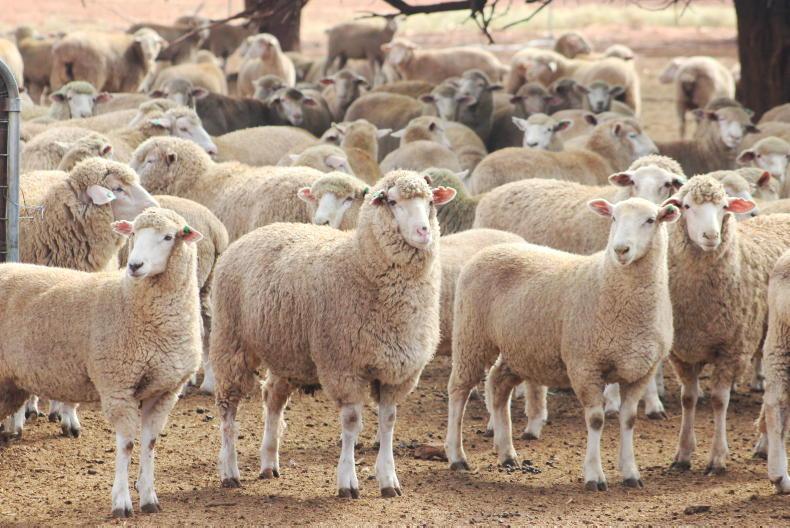

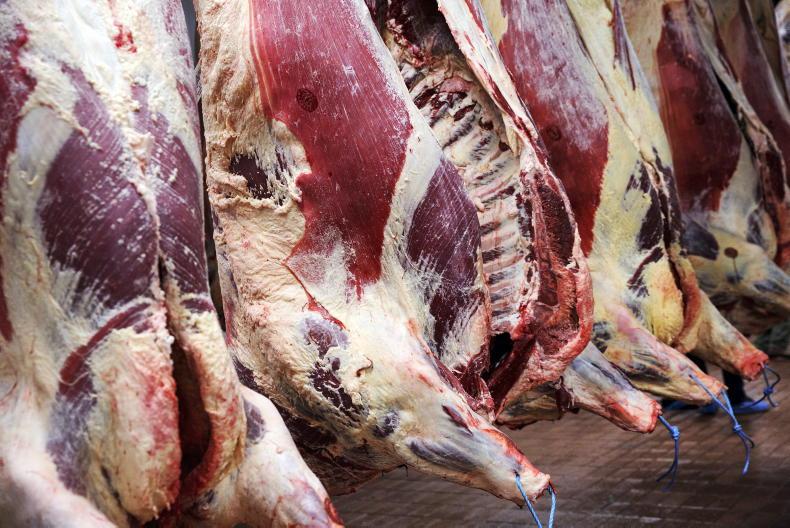
SHARING OPTIONS